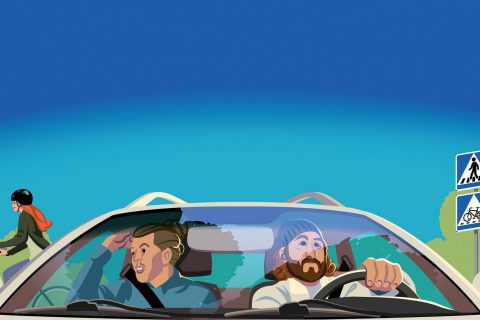
Driver distraction
Distracted driving is any activity that diverts attention from driving, including talking or texting on your phone or fiddling with the entertainment or navigation system: anything that takes the driver’s attention away from the task of safe driving.
The main task of the driver is to operate the vehicle safely. This means that the task of driving has to have the driver’s full attention. Any non-driving activity is a potential distraction and increases the risk of crashing.
Typically, there are three channels of influence: eyes are off the road, hands are off the vehicle’s controls, or concentration is on something other than the driving situation. A driver can be distracted by the use of electronic devices such as a mobile phone or a navigator. The distraction can also be caused by, for example, searching for goods in a bag or in the car, or it can be caused by passengers.
The risk of an accident varies depending on the activity. The risk level of messaging is double, while reaching for the phone or searching for it while driving also doubles the risk. Driver distraction increases the risk of rear-end collision eight-fold (Crash Risk of Cell Phone Use While Driving).
Driver distraction has four effects
- Visual: looking away from the traffic situation.
- Manual: letting go of the controls to perform other functions.
- Cognitive: disengagement of cognitive functions from the driving task.
- Auditory: for example loud music can be a disturbance.
Tips for driving – when you drive, just drive
- Set the mobile phone to silent, and let calls go to voice mail.
- Set your smartphone to reply to callers via text message: “I’m driving”.
- Stop at a safe place to call or read messages.
- Plan your trip, and schedule a coffee break when you can listen to messages.
- If you call someone who is driving, end the call quickly.
- Set an example with your own behaviour: your child will soon be old enough for driving school.
Safe driving first
The human brain has a limited ability to share attention between competing tasks. According to brain scientists, the brain does not “multitask”; in reality, it shifts attention between two tasks. When two cognitively demanding tasks are performed at the same time, the performance of one or both is disrupted. Observation of traffic suffers, the development of potentially hazardous situations is not recognised and reactions are delayed in sudden situations. Corrective moves are often made in the wrong direction, as the concentration has not been on traffic.
When performing a secondary function safely, the following must be taken into account:
- keep your eyes on the road as closely as possible
- keep at least one hand on the wheel
- the secondary action can be interrupted at any time
- the driver controls the performance, not external devices
- the display can be easily seen by the driver and the contents can be understood.





